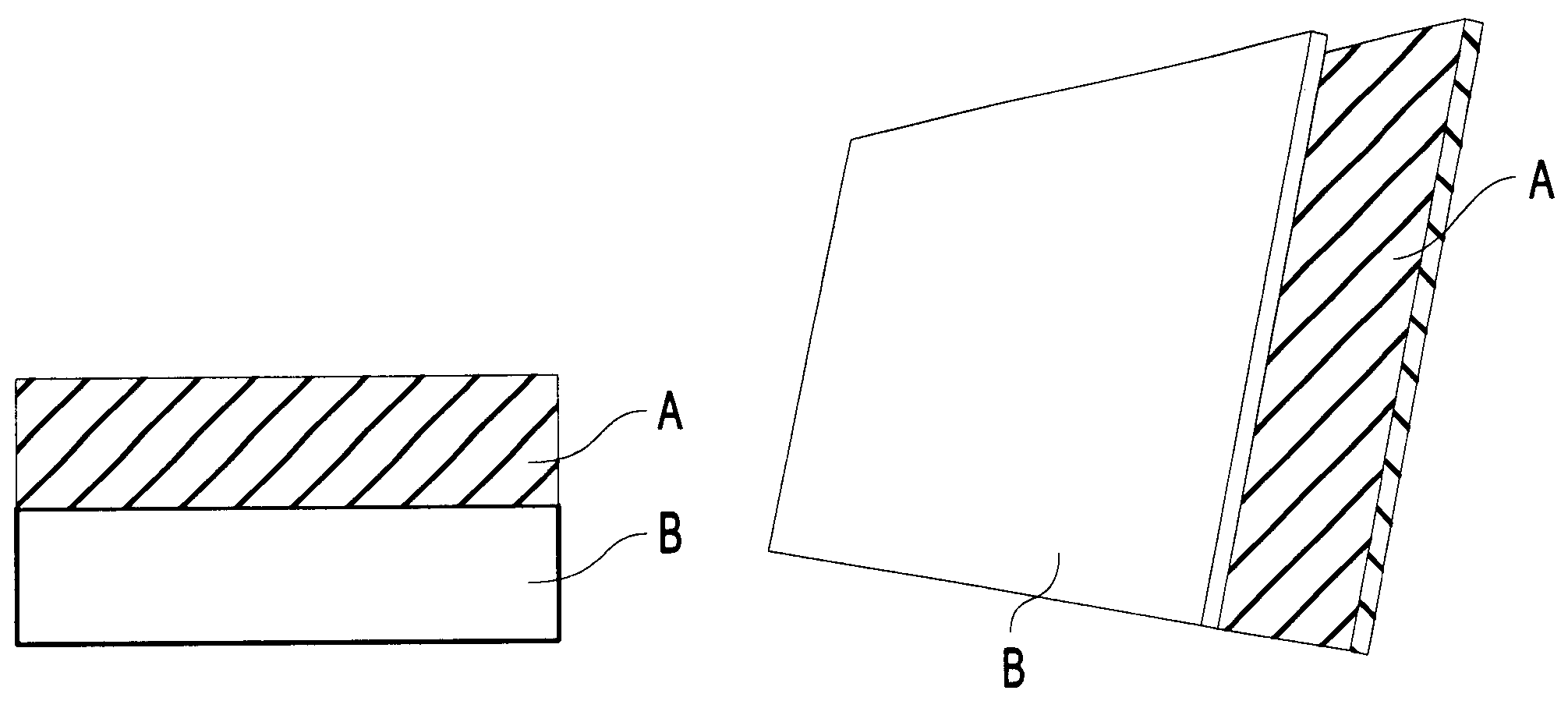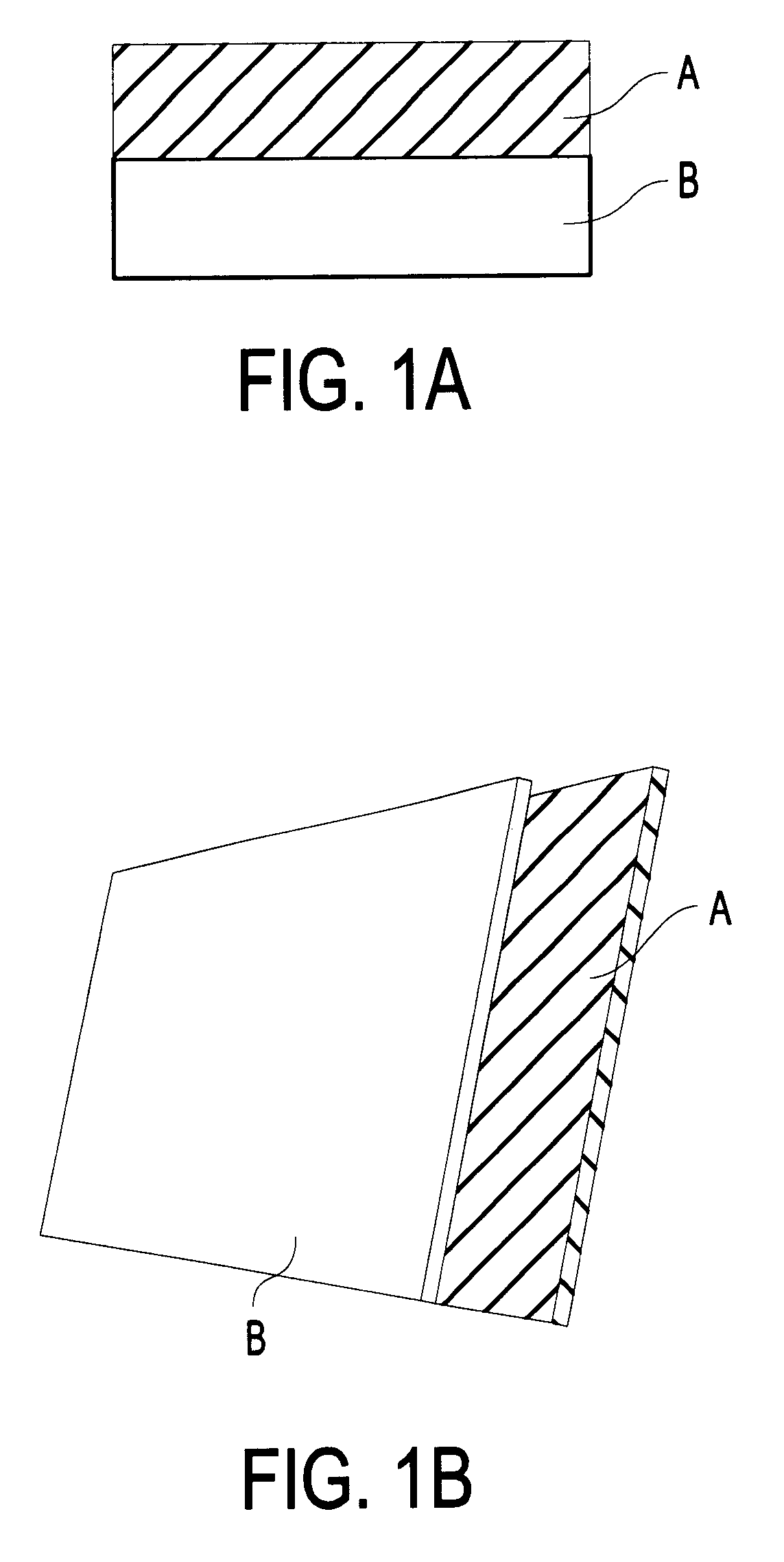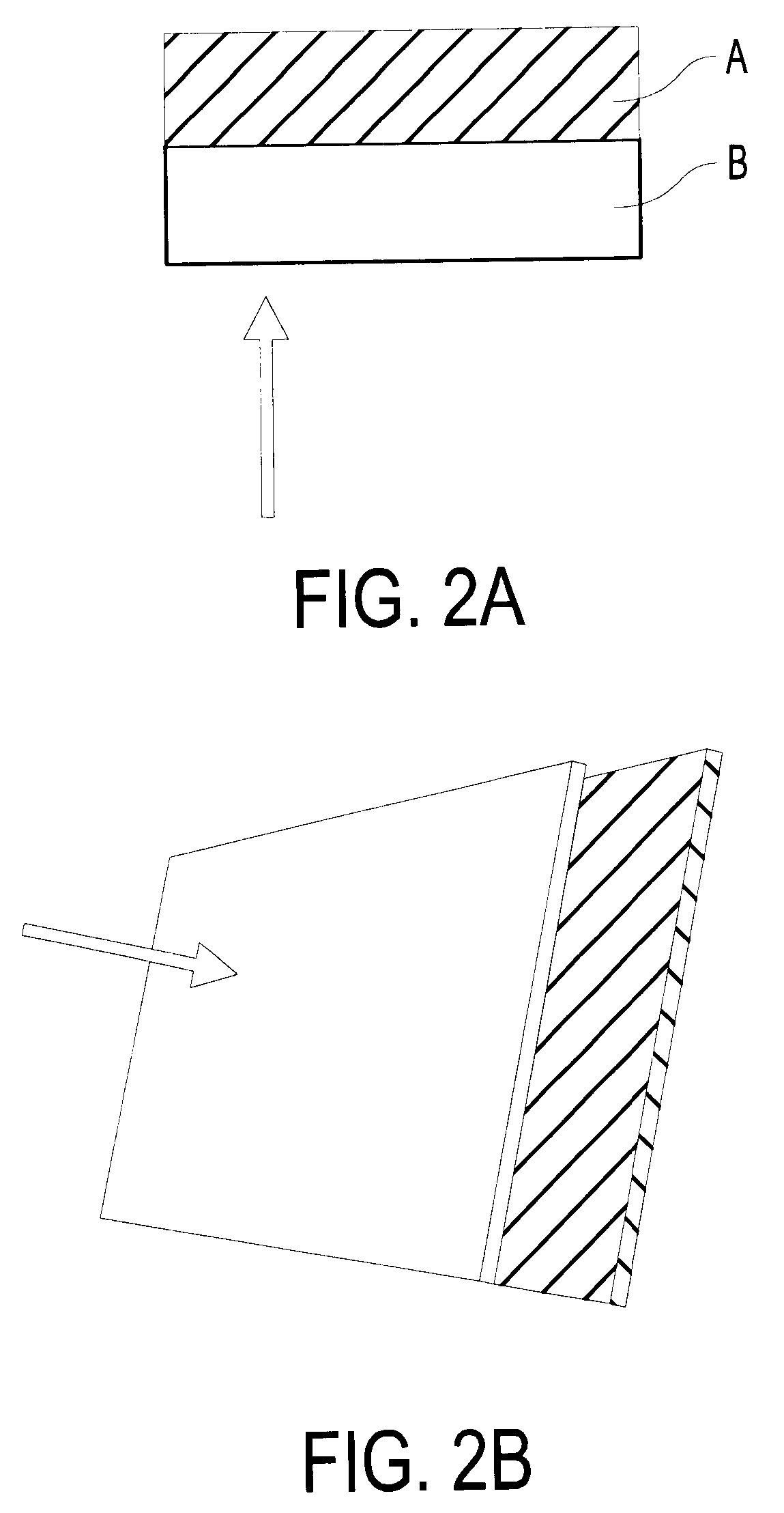Thermochromic laminates and methods for controlling the temperature of a structure
a technology of thermochromic laminates and structures, applied in non-linear optics, lighting and heating apparatus, instruments, etc., can solve the problem that the shibahashi '592 patent does not recognize the advantages,
- Summary
- Abstract
- Description
- Claims
- Application Information
AI Technical Summary
Benefits of technology
Problems solved by technology
Method used
Image
Examples
Embodiment Construction
Model Building and Preparation
Two miniature roof models were created for testing purposes. The models where created using standard roofing wood (1 / 2 inch thickness). The sides of the roof measured approximately 1 ft..times.1 ft. each. All the seams were then sealed and attached to a flat wood base. One of the roof sides was then slit to allow the insertion of a temperature probe. The slit was then patched with insulating material to keep the inner roof chamber sealed. Commercially available Owens Corning Classic Shingles (Asphalt FiberGlas.RTM.--Onyx Black) were attached to the first model which is considered the base. The second model was used to test different combinations of materials against the standard shingle roof model.
Heat Source
In most performance tests, the models were placed outside in an open area. In other performance tests, two 125 watt infrared heat lamps were used to provide heat energy.
Preparation of the Thermochromic Laminate
The thermochromic laminate has two main...
PUM
| Property | Measurement | Unit |
|---|---|---|
| temperatures | aaaaa | aaaaa |
| reflectance | aaaaa | aaaaa |
| emissivity | aaaaa | aaaaa |
Abstract
Description
Claims
Application Information
 Login to View More
Login to View More - R&D
- Intellectual Property
- Life Sciences
- Materials
- Tech Scout
- Unparalleled Data Quality
- Higher Quality Content
- 60% Fewer Hallucinations
Browse by: Latest US Patents, China's latest patents, Technical Efficacy Thesaurus, Application Domain, Technology Topic, Popular Technical Reports.
© 2025 PatSnap. All rights reserved.Legal|Privacy policy|Modern Slavery Act Transparency Statement|Sitemap|About US| Contact US: help@patsnap.com



